Water Opossum
- March 19, 2024
- 0 comment
The water opossum, scientifically known as Chironectes minimus, is a fascinating aquatic mammal native to Central and South America. Unlike its North American opossum counterparts, the water opossum belongs to a distinct family and genus, boasting unique adaptations for its watery habitat. Sporting webbed hind feet and a hairless, prehensile tail, it navigates freshwater environments with remarkable agility. Its dense, waterproof fur enables it to stay dry and warm while submerged, while its ability to close its nostrils and ears underwater facilitates extended dives for hunting.

| Specifications | Description |
|---|---|
| Scientific Name | Chironectes minimus |
| Common Name | Water Opossum |
| Family | Didelphidae |
| Genus | Chironectes |
| Habitat | Freshwater environments such as rivers, streams, marshes |
| Distribution | Central and South America |
| Physical Characteristics | Webbed hind feet, hairless prehensile tail, waterproof fur |
| Adaptations | Ability to close nostrils and ears underwater, nocturnal vision |
| Diet | Fish, crustaceans, insects, amphibians |
| Reproduction | Viviparous, underdeveloped young in mother’s pouch |
| Conservation Status | Least Concern |
| Threats | Habitat loss, pollution, human encroachment |
| Importance | Crucial role in maintaining aquatic ecosystems |
A Fascinating Aquatic Mammal
The water opossum, scientifically known as Chironectes minimus, is a remarkable marsupial native to Central and South America. Despite its name, it is not closely related to the opossums found in North America. Instead, it belongs to the family Didelphidae and is the only member of the genus Chironectes.
Habitat and Distribution


The habitat and distribution of water opossums are primarily centered around freshwater environments in Central and South America. These adaptable mammals are commonly found in various habitats such as rivers, streams, marshes, and wetlands. They thrive in regions with dense vegetation and abundant water sources, including the Amazon rainforest and surrounding areas. Water opossums are particularly prevalent in tropical and subtropical regions where freshwater ecosystems are plentiful. Their distribution spans countries such as Brazil, Peru, Bolivia, Ecuador, Colombia, and other parts of South America. Within their habitats, water opossums play important roles in maintaining ecological balance and are key indicators of the overall health of aquatic ecosystems.
Physical Characteristics

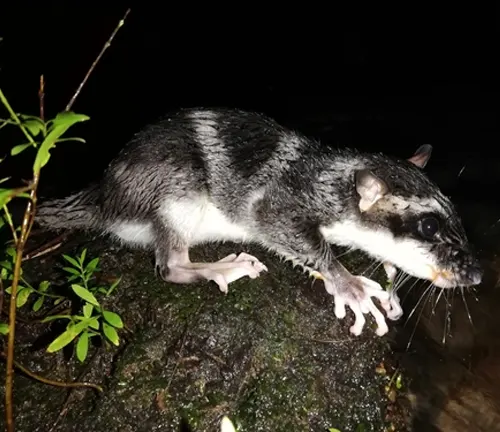
The physical characteristics of water opossums are uniquely adapted to their aquatic lifestyle. These mammals have several distinct features that enable them to thrive in freshwater environments. One notable trait is their webbed hind feet, which aid in swimming and navigating through water with agility and precision. Additionally, water opossums possess a hairless prehensile tail, which serves as a powerful tool for grasping and maneuvering while swimming. Their fur is dense and waterproof, providing insulation and keeping them dry and warm even when submerged. Another remarkable adaptation is their ability to close their nostrils and ears underwater, allowing them to dive and forage for extended periods without needing to surface for air. This combination of physical attributes makes water opossums well-suited for life in aquatic habitats, where they can hunt and thrive with remarkable efficiency.
Unique Adaptations
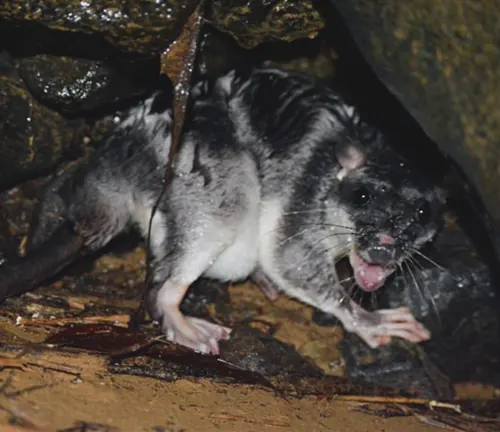

Water opossums exhibit several unique adaptations that set them apart from other mammals, particularly in their ability to thrive in aquatic environments. One of the most remarkable adaptations is their capacity to close their nostrils and ears while submerged underwater. This remarkable feature allows them to dive and forage for prey without the risk of water entering their respiratory system. As nocturnal hunters, water opossums rely on keen senses to locate prey in low-light conditions. Their eyes are adapted for both underwater and above-water vision, enabling them to navigate and hunt effectively in varying environments. Additionally, their webbed hind feet provide propulsion and agility while swimming, while their hairless, prehensile tail aids in steering and maneuvering through water with precision. Collectively, these unique adaptations equip water opossums with the tools they need to thrive in their watery habitats and make them fascinating subjects for study and observation.
Behavior and Diet
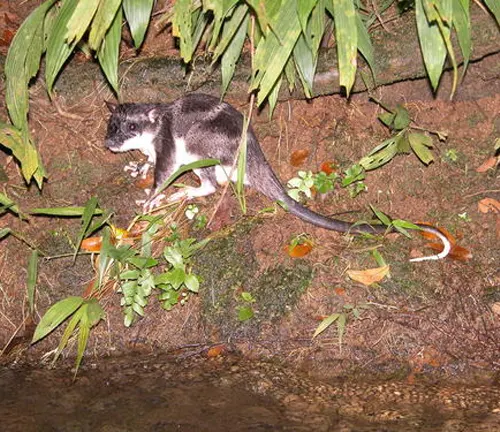

The behavior and diet of water opossums are closely intertwined with their aquatic lifestyle. These mammals are primarily nocturnal, meaning they are most active during the night. Under the cover of darkness, water opossums venture into their freshwater habitats in search of prey. They are opportunistic feeders, consuming a diverse diet that includes fish, crustaceans, insects, and amphibians. Using their sharp teeth and agile swimming skills, water opossums hunt and capture prey with remarkable efficiency. Their ability to close their nostrils and ears underwater allows them to dive and forage for extended periods without needing to surface for air. After securing their prey, water opossums may return to their dens or resting sites to consume their meal in relative safety. This nocturnal behavior and versatile diet make water opossums well-adapted to their aquatic habitats, where they play an important role in maintaining the balance of freshwater ecosystems.
Reproduction and Life Cycle
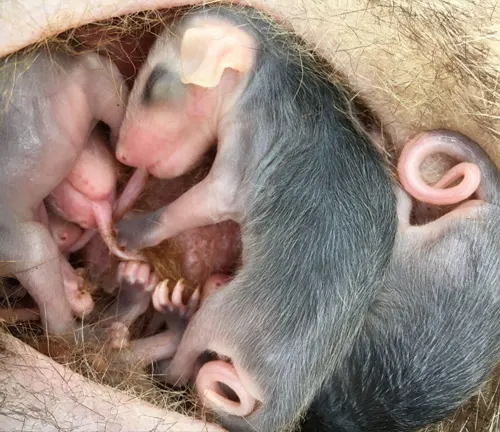
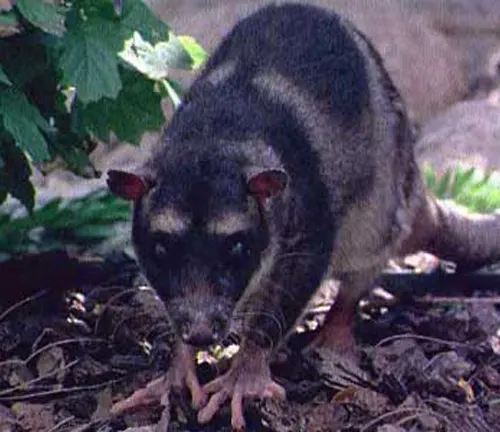
The reproduction and life cycle of water opossums are fascinating aspects of their biology. Like other marsupials, water opossums are viviparous, meaning they give birth to relatively undeveloped young. The reproductive process begins with mating, typically occurring during the breeding season. After mating, the female water opossum undergoes a gestation period of approximately two weeks. Following this short gestation period, the female gives birth to tiny, underdeveloped joeys.
Unlike placental mammals, water opossum joeys are born in an extremely premature state, resembling embryos. Immediately after birth, the joeys crawl into the mother’s pouch, where they attach to a nipple and continue their development. Inside the pouch, the joeys grow and mature, completing their development over the course of several weeks to months, depending on environmental conditions and maternal care.
As the joeys grow and develop within the safety of the mother’s pouch, they gradually become more independent and begin to venture out on their own. Eventually, they reach a stage where they are fully weaned and able to fend for themselves in their aquatic habitat. The exact duration of the pouch-rearing period and the timing of weaning may vary depending on factors such as food availability and environmental conditions.
Conservation Status
The conservation status of water opossums is currently classified as “Least Concern” on the International Union for Conservation of Nature (IUCN) Red List. This designation indicates that, at present, water opossum populations are stable and not facing imminent threats of extinction. However, despite their relatively secure status, ongoing conservation efforts are necessary to ensure the long-term survival of these unique mammals. Factors such as habitat loss, pollution, and human encroachment into their freshwater habitats continue to pose potential risks to water opossum populations. By monitoring their populations and habitats, implementing habitat conservation measures, and raising awareness about the importance of preserving their ecosystems, conservationists can work towards maintaining the stability of water opossum populations in the future.
Threats and Challenges
Threats and challenges facing water opossums are multifaceted and can significantly impact their populations and habitats. One of the primary threats is habitat loss and degradation due to deforestation, urbanization, and agricultural expansion. As human activities encroach into their freshwater habitats, water opossums face diminishing areas to forage, breed, and seek shelter.
Pollution of waterways poses another significant threat to water opossums. Chemical pollutants, agricultural runoff, and waste disposal can contaminate their aquatic environments, affecting water quality and disrupting the delicate balance of their ecosystems. Pollution can also directly harm water opossums through ingestion of contaminated prey or exposure to toxic substances.
Invasive species introduce additional challenges for water opossums. Non-native species competing for resources or preying upon native species can disrupt food webs and alter ecosystem dynamics, potentially impacting the availability of prey for water opossums.
Human activities such as overfishing and illegal hunting can directly affect water opossum populations. Overexploitation of fish stocks can reduce prey availability for water opossums, while hunting and poaching may directly impact their populations.
Climate change poses a growing threat to water opossums and their habitats. Rising temperatures, altered precipitation patterns, and extreme weather events can disrupt ecosystems, affecting food availability, water quality, and habitat suitability for water opossums.
Importance in Ecosystems
Water opossums play a crucial role in maintaining the health and balance of freshwater ecosystems. As predators, they help regulate populations of prey species, preventing overpopulation and maintaining ecological equilibrium. By controlling the abundance of prey species such as fish, crustaceans, and insects, water opossums contribute to the overall stability and functioning of aquatic food webs.
Additionally, water opossums serve as indicators of ecosystem health. Their presence or absence in freshwater habitats can provide valuable insights into the condition of the ecosystem. Healthy populations of water opossums suggest a well-balanced ecosystem with sufficient prey availability and suitable habitat conditions. Conversely, declines in water opossum populations may signal environmental degradation, pollution, or habitat loss.
Water opossums also contribute to nutrient cycling and energy flow within freshwater ecosystems. Through their feeding activities and interactions with prey species, they help redistribute nutrients and energy throughout the ecosystem, influencing the productivity and dynamics of aquatic habitats.
Furthermore, water opossums serve as prey for other predators, including birds of prey, large snakes, and carnivorous mammals. Their presence in the food web provides food resources for higher trophic levels, contributing to the biodiversity and complexity of freshwater ecosystems.
Different Species
Chironectes minimus
Commonly known as the Water Opossum or the Water Opossum Rat, this species is native to Central and South America. It is characterized by its unique adaptations for an aquatic lifestyle, including webbed hind feet, a hairless prehensile tail, and waterproof fur.

Frequently Asked Questions (FAQs)
- What is a water opossum?
A water opossum, scientifically known as Chironectes minimus, is a unique aquatic mammal native to Central and South America. - Where do water opossums live?
Water opossums inhabit freshwater environments such as rivers, streams, and marshes throughout Central and South America. - How do water opossums differ from North American opossums?
Unlike North American opossums, water opossums belong to a different family and possess adaptations for an aquatic lifestyle. - What do water opossums eat?
Water opossums are opportunistic feeders, consuming fish, crustaceans, insects, and amphibians found in their aquatic habitats. - Do water opossums have any predators?
While adult water opossums have few natural predators, young joeys may be vulnerable to predation by birds of prey and large snakes. - How do water opossums reproduce?
Water opossums are viviparous, giving birth to underdeveloped young that complete their growth in the mother’s pouch. - Are water opossums endangered?
Currently, water opossums are not considered endangered, but conservation efforts are essential to safeguard their habitats. - What are the unique adaptations of water opossums?
Water opossums possess webbed hind feet, a hairless prehensile tail, and waterproof fur, enabling them to thrive in aquatic environments. - How long can water opossums stay underwater?
- Water opossums can stay submerged for extended periods thanks to their ability to close their nostrils and ears underwater.
- Do water opossums interact with humans?
While water opossums generally avoid human contact, they may occasionally come into conflict with humans in areas where their habitats overlap. - What is the conservation status of water opossums?
Water opossums are currently listed as least concern, but they face threats from habitat loss, pollution, and human encroachment.





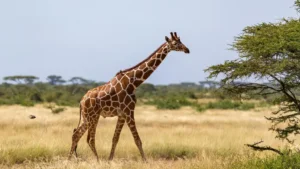
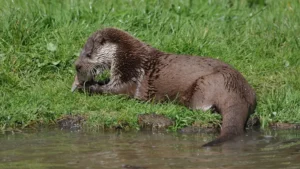





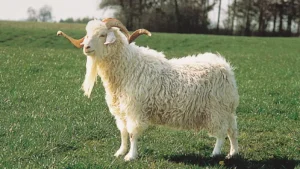

Leave your comment